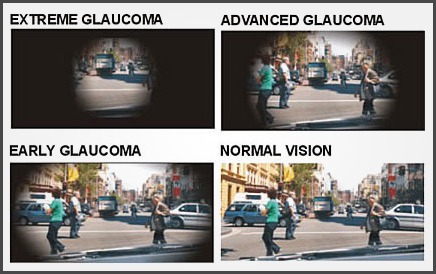Glaucoma is the name given to a group of eye diseases in which the optic nerve at the back of the eye is slowly destroyed. It is the result of a blockage of outflow for the fluid in the back of the eye.

In most people this damage is due to an increased pressure inside the eye – a result of blockage of the fluid in the back of the eye. In other patients the damage may be caused by poor blood supply to the vital optic nerve fibres, a weakness in the structure of the nerve, and/or a problem in the health of the nerve fibres themselves.
Over 300,000 Australians have glaucoma. While it is more common as people age, it can occur at any age. As our population becomes older, the proportion of glaucoma patients is increasing.
Chronic (primary open-angle) glaucoma is the most common type. It has no symptoms until vision is lost in the later stages. Damage progresses very slowly and destroys vision gradually, starting with the side vision. One eye covers for the other, and the person remains unaware of any problem until a majority of nerve fibres have been damaged, and a large part of vision has been destroyed.
This damage is irreversible.
At Beckenham Optometrist we use advanced techniques for assessing the risk of glaucoma utilising imaging of the optic nerve, visual field assessments to map peripheral vision and intraocular pressure testing among the battery of tests performed.
Glaucoma is progressive and usually relentless – often referred to as the silent thief of sight.




